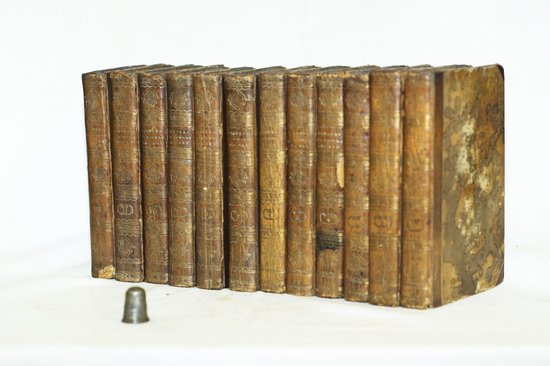Narrative
String to Morocco
14. Standardization
Bindings could be used to identify or distinguish the works of a multi-volume collection. The 12 volumes of The Wonders of Nature and Art (London: Walker; Harris; Vernon and Hood; Hurst, 1803) pictured here, for example, would look quite impressive upon the mantle – each volume bound in brown half calf with gilt engraving.
In summary, bindings for chapbooks and pamphlets were used to hold together the pages of a single work that was not constructed to last. Part or full leather bindings could serve as a means of preserving a text for posterity, protecting against frequent use (including chapbooks or collections of ephemeral literature), or providing distinction. Cover design was used to differentiate downmarket and upmarket works. Publishers employed colour, decorative design, and higher quality illustrations to cater to or create new markets for pamphlet fiction. Book covers could be practical or lavish, depending on taste and budget, the perceived value of the work, the social standing of the purchaser, and the intended use of the book, involving gilt and/or blind engraving; various colour schemes; different forms of marbling for the boards; quarter, half or full leather; which could be made of calf, goat or other types skin; and cloth binding (later).
Finally, as everyone knows, Robinson Crusoe tells a story that has been popular for nearly three hundred years, among children and adults, abridged or complete (now in other mediums), passed on from one generation to another. Less well recognized is the fact that every iteration of Robinson Crusoe, from string to morocco (to paperback or film), adds to that story by describing different material, cultural, and social valuation of copies of the same work. Further, the many ways to bind and cover works of literature in the Romantic period (as well as before and since) reflect the diversity of print culture, the extent of market fragmentation, and the specificity of reading practices. Every cover tells a story.
David Buchanan, University of Alberta, 2013










